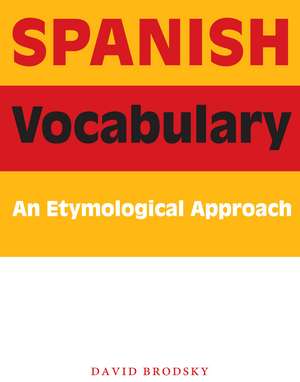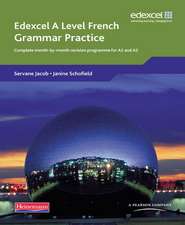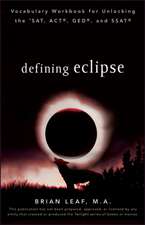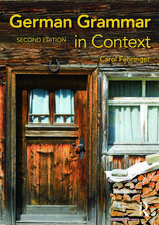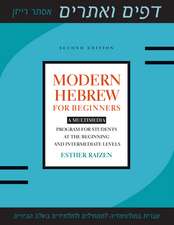Spanish Vocabulary: An Etymological Approach
Autor David Brodskyen Limba Engleză Paperback – 2008
Spanish Vocabulary is divided into four parts and four annexes:
- Part I provides background material on the origins of Spanish and begins the process of presenting Spanish vocabulary.
- Part II presents "classical" Spanish vocabulary—words whose form (in both Spanish and English) is nearly unchanged from Latin and Greek.
- Part III deals with "popular" Spanish vocabulary, which underwent significant changes in form (and often meaning) during the evolution from Latin to Spanish. A number of linguistic patterns are identified that will help learners recognize and remember new vocabulary.
- Part IV treats a wide range of themes, including words of Germanic and Arabic origin, numbers, time, food and animals, the family, the body, and politics.
- Annex A: Principal exceptions to the "Simplified Gender Rule"
- Annex B: 700 words whose relations, if any, to English words are not immediately obvious
- Annex C: -cer verbs and related words
- Annex D: 4,500 additional words, either individually or in groups, with English correspondences
Preț: 277.53 lei
Nou
Puncte Express: 416
Preț estimativ în valută:
53.11€ • 57.67$ • 44.61£
53.11€ • 57.67$ • 44.61£
Carte tipărită la comandă
Livrare economică 22 aprilie-06 mai
Preluare comenzi: 021 569.72.76
Specificații
ISBN-13: 9780292716681
ISBN-10: 0292716680
Pagini: 653
Dimensiuni: 156 x 235 x 37 mm
Greutate: 0.45 kg
Editura: University of Texas Press
Colecția University of Texas Press
ISBN-10: 0292716680
Pagini: 653
Dimensiuni: 156 x 235 x 37 mm
Greutate: 0.45 kg
Editura: University of Texas Press
Colecția University of Texas Press
Notă biografică
David Brodsky, who currently resides in Aix-en-Provence, France, is also the author of Spanish Verbs Made Simple(r) and French Verbs Made Simple(r). He holds advanced degrees from MIT and Yale University.
Cuprins
- Preface
- Abbreviations and Symbols
- Simplified Gender Rule
- Introduction
- Part I: Background
- 1.1. Spanish as a Romance Language
- 1.2. "Learned" versus "Popular" Words
- 1.3. Latin: A Few Useful Tools
- Part II: Classical Vocabulary
- 2.1. "Learned" Latin Words
- 2.2. "Learned" Greek Words
- Part III: Popular Vocabulary: The Shape of Spanish
- 3.1. Addition of "Helping" e: esnob = snob
- 3.2. Initial f to h: higo = fig
- 3.3. Vowel Changes: e to ie, o to ue, etc.
- 3.4. Basic Consonant Changes: p/b, t/d, c/g
- 3.5. Other Distinctive Consonants (or Lack Thereof)
- Part IV: Selected Topics
- 4.1. Goths and Other Germans
- 4.2. Arabs and Muslims
- 4.3. Numbers and Quantities
- 4.4. Time
- 4.5. Ser and Estar
- 4.6. Food and Animals
- 4.7. Religion
- 4.8. The Family
- 4.9. Body, Spirit, and Mind
- 4.10. Romance (Languages) and Politics
- Annexes: Additional Words
- A. Principal Exceptions to the "Simplified Gender Rule"
- B. 700 Not-So-Easy Words
- C. Verbs Ending in -cer and Related Words
- D. 4,500 Relatively Easy Words
- Selected References
Descriere
By the author of Spanish Verbs Made Simple(r) and French Verbs Made Simple(r)—an innovative approach to learning Spanish vocabulary based on understanding the etymology of Spanish words.
